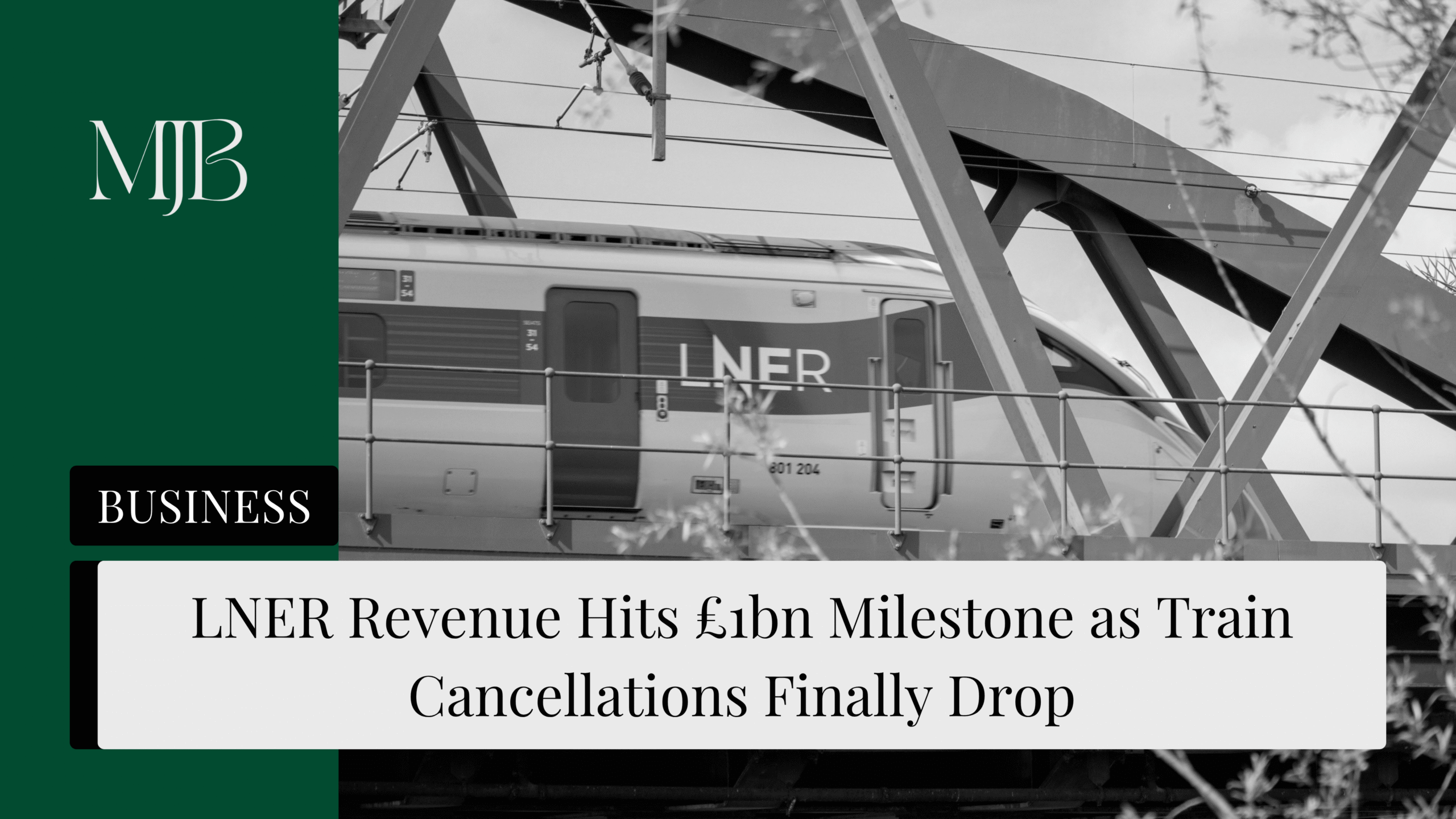Are Britain’s railways actually getting their act together? LNER just crossed the £1bn revenue milestone while slashing train cancellations – though “progress” might be generous when barely half their trains arrive on time.
The East Coast Main Line operator saw revenue surge from £866.5m to over £1bn in the year ending March 2025, with passenger journeys climbing 8.8% to 26.4m. Here’s what you need to know about LNER’s financial performance and why it matters for UK rail’s future.
LNER’s £1bn Revenue Breakdown: Where’s the Money Coming From?
LNER’s revenue surge wasn’t just about packed carriages. Passenger revenue climbed from £764.7m to £859.7m, while government subsidies more than doubled from £36m to £88.8m.
Why the subsidy spike? Rising energy costs, pay increases, and fewer incentive payments from Network Rail all contributed. The silver lining? Strike-related revenue losses plummeted from £23.4m to £8.3m as industrial relations finally stabilised.
LNER Performance: Progress with Room for Improvement
Here’s LNER’s performance scorecard:
Wins:
- Train cancellations dropped from 4.8% to 3.8%
- Trains arriving within 15 minutes improved to 92.8%
- Pre-tax profit held steady at £6.7m
Still Working On:
- On-time performance slipped to 56.4%
- Heavy reliance on government subsidies continues
For context, 56% punctuality means nearly half of all trains run late. While cancellations are down, reliability remains a challenge for passengers expecting consistent service.
Northern and TransPennine: The Supporting Cast
While LNER grabbed headlines, sister companies had mixed results:
Northern Trains saw profit rise from £8.7m to £10.8m despite cancellations increasing to 8%. Revenue hit £1.1bn, but their punctuality within three minutes dropped to 78.7%.
TransPennine Express had the roughest ride, with profit falling from £2.9m to £1.9m in their first full year under government ownership. Revenue did jump from £387.8m to £465.5m, so there’s that.
What This Means for UK Rail’s Future
LNER’s £1bn milestone demonstrates strong passenger demand for rail travel when services run consistently. The reduction in strike-related losses signals improving labour relations, which is essential for reliable operations.
However, 56% punctuality falls short of passenger expectations and European standards. The key takeaway? UK rail is moving in the right direction, but significant improvements are still needed to match world-class performance standards.
FAQ
Q1: Why did LNER’s government subsidy double?
A: Rising energy costs, pay increases, and reduced incentive payments from Network Rail all contributed. Basically, everything got more expensive while revenue streams tightened.
Q2: Is 56% punctuality actually acceptable for a major rail operator?
A: Not really. While it’s typical for UK rail standards, most European operators achieve 80%+ punctuality. There’s clearly room for improvement.
Q3: What caused the drop in strike-related losses?
A: A deal between the rail industry and the ASLEF union reduced industrial action significantly. Less strikes = fewer cancelled services = happier passengers (and accountants).
Q4: How does LNER compare to other UK rail operators financially?
A: LNER’s £1bn revenue milestone puts it among the larger operators. However, its reliance on government subsidies (£88.8m) shows the ongoing financial challenges facing UK rail.
Q5: Will train performance continue improving?
A: Signs point to gradual improvement, especially with reduced industrial action. However, infrastructure constraints and funding challenges suggest progress will be incremental rather than dramatic.
DISCLAIMER
Effective Date: 15th July 2025
The information provided on this website is for informational and educational purposes only and reflects the personal opinions of the author(s). It is not intended as financial, investment, tax, or legal advice.
We are not certified financial advisers. None of the content on this website constitutes a recommendation to buy, sell, or hold any financial product, asset, or service. You should not rely on any information provided here to make financial decisions.
We strongly recommend that you:
- Conduct your own research and due diligence
- Consult with a qualified financial adviser or professional before making any investment or financial decisions
While we strive to ensure that all information is accurate and up to date, we make no guarantees about the completeness, reliability, or suitability of any content on this site.
By using this website, you acknowledge and agree that we are not responsible for any financial loss, damage, or decisions made based on the content presented.






